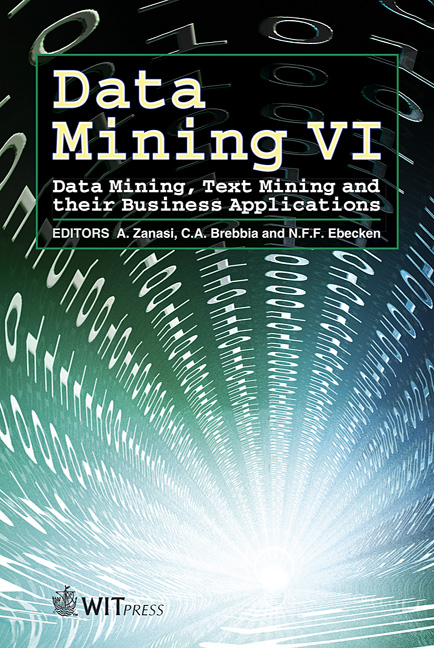Multi-relational Data Mining In Microsoft® SQL Server™
Price
Free (open access)
Volume
35
Pages
10
Published
2005
Size
1,017 kb
Paper DOI
10.2495/DATA050221
Copyright
WIT Press
Author(s)
C. L. Curotto & N. F. F. Ebecken
Abstract
One of the most useful features of the Object Linking and Embedding Database for Data Mining technology, a standard for implementation of data mining algorithms aggregated with Microsoft® SQL Server™, is the ability of using nested data mining columns, providing an affordable and efficient way to support relational data models. A brief overview of the common approaches used to deal with multi-relational data mining is presented. Experiments are carried out, using the SQL Server™ 2000 release as well as its new 2005 Beta 2 version, to evaluate the capability of these tools while dealing with multi-relational data mining. In these experiments the Microsoft® Decision Trees data mining algorithm is considered. Keywords: multi-relational, data mining, algorithm, decision trees, database, sql, server, nested tables. 1 Introduction To achieve the tight coupling of Data Mining (DM) techniques in Database Management Systems (DBMS) technology, a number of approaches have been developed in the last years. These approaches include solutions provided by both company and academic research groups. Toward this objective, the Microsoft® (MS) Object Linking and Embedding Database for DM (OLE DB DM) technology [1] provides an industry standard for developing DM algorithms. This technology was included in the MS SQL Server™ (MSSQL) 2000 release [2]. The Analysis Services (AS) component of this software includes a DM provider supporting two algorithms: one for classification by decision trees [3] and another for clustering [4]. The DM
Keywords
multi-relational, data mining, algorithm, decision trees, database, sql, server, nested tables.





